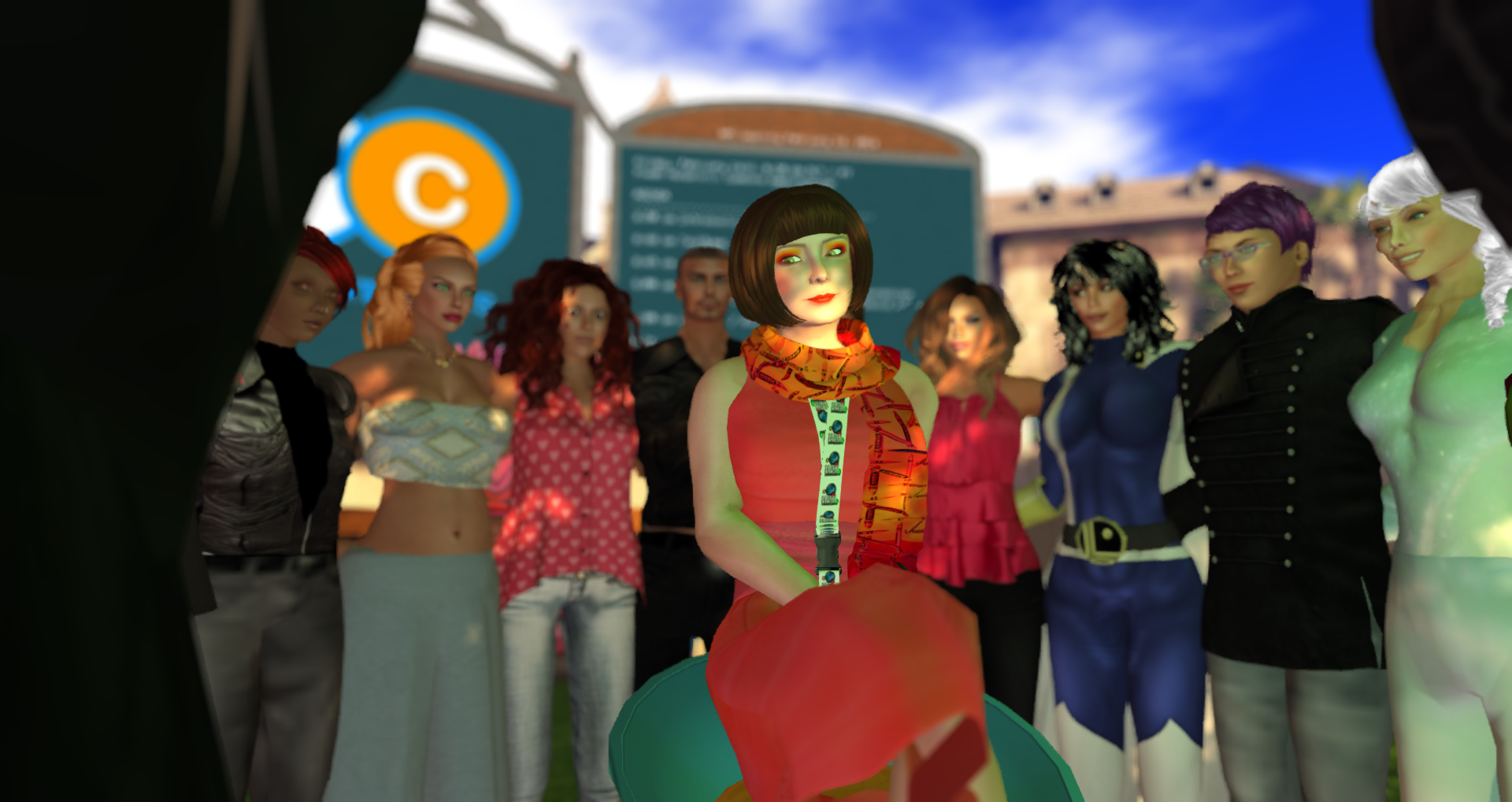 Today I attended the Avatar on Duty session at the Dorothy A. Johnson Center for Philanthropy and Nonprofit Leadership office on Aloft Nonprofit Commons. 2020Vision (Ashima Saigal) moderated the session and she was joined by several other Johnson Center staff, along with a sizeable crowd of interested avatars. We were all there to discuss a key question for those involved with working with nonprofits in Second Life: How can nonprofits find long-term sustainability in Second Life and better translate into real-world action towards achieving their missions?
Today I attended the Avatar on Duty session at the Dorothy A. Johnson Center for Philanthropy and Nonprofit Leadership office on Aloft Nonprofit Commons. 2020Vision (Ashima Saigal) moderated the session and she was joined by several other Johnson Center staff, along with a sizeable crowd of interested avatars. We were all there to discuss a key question for those involved with working with nonprofits in Second Life: How can nonprofits find long-term sustainability in Second Life and better translate into real-world action towards achieving their missions?
The session gave us opportunity to brainstorm and discuss this topic in an open forum. One of the first issues we discussed was what nonprofits hoped to gain by having a presence in Second Life. Many avatars saw Second Life as a way to engage a wider audience and bring awareness of their organization’s work. Others mentioned the benefit of having a common meeting space and a way to network and collaborate with other nonprofits doing similar work, as well as connecting with organizations they might never have had the opportunity to meet. Jarhead Euler of Uptown Shelter gave the example of how his organization only heard about Community Voicemail through Second Life and now is meeting with several other organizations to discuss implementing this tool for their real-life work.
However, we wondered what’s advantageous about using Second Life versus other Web 2.0 tools (i.e. Facebook, instant messaging, web conferencing, etc.)? Some said they treated Second Life just like any other online community, but one that served a different purposes, reaching a different audience that though smaller creates greater affinity among its members. Others felt the 3D, immersive experience of a virtual world creates a more powerful and personal interaction. There’s definitely an added layer of fun that potentially makes it an appealing medium for users to engage. Another point raised was that Second Life reaches an early adopter audience, and can propagate experiential learning in a way that other web-based applications cannot. Virtual worlds are seen by many as being the future of the Web, which puts organizations already in Second Life ahead of the curve for future expansion into virtual worlds as they become more prevalent.
This raised the question of what audience nonprofits are trying to reach in Second Life? Although there are many newcomers interested in learning more about the platform, it’s important to keep in mind that nonprofits are not necessarily trying to bring people into Second Life, but rather, seeking to tap into an already established audience in Second Life, who is looking to find ways to use the tool for social benefit. The audience is likely to vary depending on the organization, but determining the demographics is important when it comes to thinking about approach and gaining support for funding Second Life work.
Greater interaction and connection kept commonly coming up as an argument for the value of Second Life. Yet these two aspects are challenging, if not impossible to measure, especially in comparison to the benefit of other tools. When thinking about sustainability, it’s important for nonprofits to think about pinpointing unique benefits that a virtual platform offers. Several people pointed out that Second Life can often save time and money, but so can other less technology-intensive tools. Others pointed out the ability for Second Life to be used for mixed reality events provides a unique experiential way of interaction with multiple simultaneous communication channels (text, voice, chat, video, etc.). There have been some case studies how this is beneficial to some groups, such as people with disabilities or different learning styles. What’s needed, we all seemed to agree, is more such studies and ways to document impact of Second Life work in furthering the missions of organizations.
We discussed other challenges of the virtual world, including the high learning curve. Second Life is not accessible for many with its technical requirements. Nonprofits will need to justify that in spite of such obstacles, the potential gains of Second Life are worth the time and resource investment.
Today’s discussion sparked more questions, but also got me thinking creatively about tangible ways nonprofits can articulate the “experience” of virtual worlds and the myriad of ways it can be used towards social change. While that challenge can be daunting it is exciting to think about nonprofits pioneering the virtual world for the benefit of the real one.
Written by: penguin kuhn

